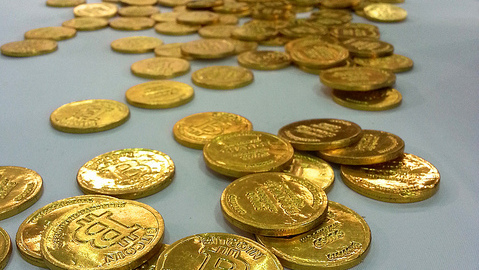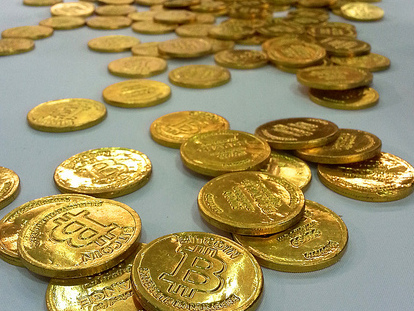
In the aftermath of the Mt.Gox debacle, in which approximately $460 million worth of Bitcoins disappeared due to a known and exploited security flaw with the exchange, the cryptocurrency industry is scrambling to find even footing.
Reflections on raw inexperience, huge expectations and negligible management skills have driven people from Wall Street to the corridors of the Capitol to reconsider the risky securities industry. However, several new projects suggest that the closure of Mt.Gox will not mark the end of the virtual currency revolution.
Recently, MazaCoin, a ZetaCoin-derivative, launched as an alternative to the dollar among North and South Dakotas’ Oglala Lakota Nation.
“My family fought and died on this soil,” recalled Payu Harris, a member of the Oglala Lakota tribe, MazaCoin developer and native activist. “Suddenly the story of Custer’s Last Stand wasn’t just words on a page but something deeply personal. I looked at how things were for the tribe now and suddenly had an idea about how we might fix it. We can’t continue to be 20 years behind the times, always trying to catch up. We have to be forward-thinking.”
Counting on tribal nations’ partial sovereignty to serve as a shield against federal intervention, Harris intends to establish the MazaCoin as the official currency of the Oglala Lakota. Unlike Bitcoin — in which there are only 21 million coins available to be mined, with approximately 12 million already in circulation — the MazaCoin has no market limitation. With a mining difficulty set intentionally lower than that of the Bitcoin, Harris is looking to former Bitcoin miners whose mining rigs are no longer adequate for mining Bitcoins to mine MazaCoins, raising interest in the currency.
With no cap on market growth, the value of the MazaCoin may remain micro-fractional to the dollar, like many other cryptocurrencies.
Additionally, it has been reported that the Federal Bureau of Investigations has told the tribe that cryptocurrencies are not legal tender in the United States and cannot be used to satisfy governmental obligations.
This has not diminished the Oglala Lakota Nation’s hopes that the MazaCoin can lift the tribe out of poverty.
“I want to get my people educated and show them this is the next level of finance,” said Harris. “Let’s make the rest of the world play catch up. Let’s be leaders and rebuild the economy on our terms.”
The first 500 MazaCoins were dedicated to the “Great Spirit and the prosperity and wealth of the Oglala Lakota Nation.” Another 25 million MazaCoins were established as a national reserve to be used as a safeguard against Mt.Gox-type collapses, and another 25 million were set aside as a trust to issue grants to local businesses and tribe members.
At the time of writing, the ZetaCoin was trading on CoinEx at $0.00000946. The idea to mine MazaCoin came after the Oglala Lakota’s attempt to mine Bitcoins failed because their account was hacked and emptied.
The MazaCoin is not the only national cryptocurrency in the news. Iceland’s Auroracoin has reached a market cap of $1 billion, making it the third most-valued cryptocurrency in current use. The Auroracoin was developed as an alternative to foreign capital restrictions imposed by the Icelandic government following the 2008 banking sector collapse, and half of the currency’s produced allotment was given away for free to all of Iceland’s inhabitants. This is leading to a lack of foreign investment in Iceland.


